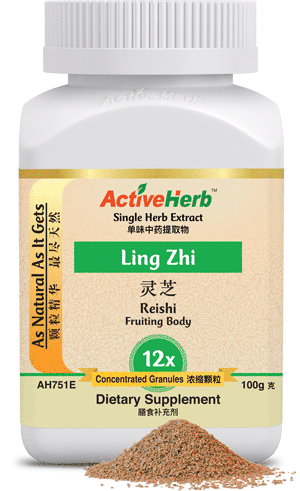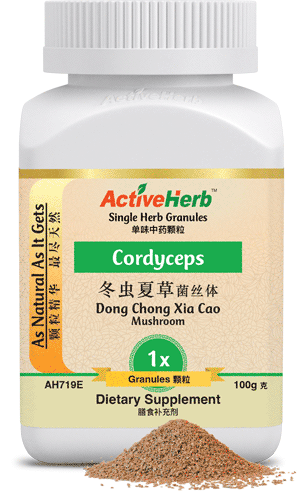Why Are Mushrooms The Hottest Wellness Trend?

We’re in the midst of a magical mushroom moment. No, not that kind of magical mushrooms that make you see swirling Yin/Yang patterns. We’re talking about edible mushrooms, far above and beyond your average pizza topping and addition to Chinese stir fry dishes.
Seemingly out of nowhere, mushrooms are everywhere. There’s mushroom coffee. Mushroom powders. Coffee creamer for mushroom coffee. Mushroom jerky. There’s even skin care products that feature mushroom extracts.
So where did the fungal fanfare come from? Well, in the Far East, mushrooms aren’t a trend, they’ve been a way of life for over 2,000 years, both as a food and a medicine. Now that ancient wisdom has been fused with modern research studies, which confirms many of the health benefits of mushrooms, the trend in the west is not surprising. Here are a few specific mushrooms that feature prominently in traditional Chinese herbal medicines (TCM).
Reishi
One mushroom that’s receiving a lot of Western press attention is reishi, or Ling Zhi (Ganoderma). A symbol of immortality in ancient Chinese culture, according to TCM theory, reishi is a potent Qi tonic. It also calms the Shen (loosely translated: “spirit”), nourishes the Heart, and tonifies the Blood and Lungs. For centuries, reishi has been used in folk medicine for coughing and other respiratory complaints such as wheezing.
The classic herbal textbook, written almost 2,000 years ago called the Shen Nong Ben Cao (aka: “Classic of the Materia Medica” or “Shen-nong’s Herbal Classics”) offers one of the earliest accounts of reishi’s therapeutic potential, referring to it as a powerful medicine.
If you want to eat a healthy diet, reishi mushrooms aren’t a type of edible fungus you’re likely to see at your local supermarket. And even if you could find reishi mushroom powder available at your local health store, you wouldn’t be all that impressed by the nutrition label. An ounce of the stuff has a gram each of protein and fiber; reishi can’t hold a candle to the wind in comparison to a kale salad.
But nutrition labels don’t always tell the whole story. The ancients regarded reishi as a herb of spiritual power, wellness and longevity.
If you want to support your vital energy and a healthy aging process, give reishi a try. Thanks to our single-herb granule extract powder, it’s never been easier to enjoy instant reishi tea
Cordyceps
Like reishi, cordyceps (Dong Chong Xia Cao) is considered a precious tonic in TCM. Cordyceps may be, in certain ways, even more remarkable than reishi, in that it’s arguably one of the rarest (if not the rarest) herbs in TCM. Although many herbs native to the Far East are now grown throughout the West, true cordyceps only grows above 10,000 feet above sea level.
What’s even more intriguing about the fungus is how it bears fruit: cordyceps are parasites of insects or fungi. In other words, this edible mushroom grows on bugs like a Zombie apocalypse. Whoever thought of the idea to take the fungus that grows on a dead insect and use it as medicine? Of course, nobody knows for sure who to give that dubious credit to, but for centuries, cordyceps has been used in TCM to invigorate the Lungs and nourish the Kidneys; in 1964, the fungal parasite was officially classified as a drug in the Chinese Pharmacopoeia.
In the early 1990s, cordyceps enjoyed brief media attention, because of several records that were broken by long-distance Chinese runners. Many people assumed the Chinese athletes were using illegal anabolic steroids. Again, who could have ever guessed that shattering a world record could be accomplished by ingesting a parasite that grows on ants and other insects?
In TCM applications, cordyceps is a tonic that’s used to replenish vital function. In research studies, like reishi, cordyceps has been shown to support the immune system.
ActiveHerb Cordyceps is produced from environmentally-sustainable practices. We use cultured Cordyceps fungus. This ensures purity and the environmental protection of the natural habitat.
Poria
Also known as Fu Ling (Sclerotium Poriae Cocos), Poria would be considered in Western natural health as a digestive aid supplement; in TCM, Fu Ling fungus promotes urination, leaches out dampness, and strengthens the Spleen (the main digestive organ in TCM). Like reishi, cordyceps and all other edible mushrooms, Fu Ling has received a lot of interest because of its ability to support the immune system.
Zhu Ling
One final fungus worth noting is Zhu Ling, aka Polyporus (Sclerotium Polyporus Umbellatus). Although it lacks the superfood superstar label like reishi and cordyceps, Zhu Ling is one worthy fungus among us. Like all mineral-rich mushrooms, it can help support potassium-sodium levels. Zhu Ling also supports kidney function (in people that already have normal kidney function).
Mushrooms: Conclusion
If you eat the wrong kind of mushroom, you can die. But over centuries of trial and lethal error, the ancients learned which fungus can be used to support Yin-Yang balance (homeostasis). Modern research shows that the phytochemicals in mushrooms, such as beta glucans, as well as essential amino acids explain why mushrooms are having their moment as a superfood superstar.
Recommended Reading From The Blog:
Feed Your Skin: How Chinese Medicine Enhances Your Beauty From The Inside Out
12 Chinese Herbs Commonly Used as Food in China
7 Chinese Herbs Commonly Found in American Kitchens
Brew a Cup of Super Coffee With These All-Star Chinese Herbs
References:







